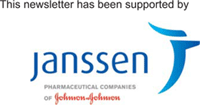|
| |
 |
MB Urowitz, MD FRCP(C)
Director, Centre for Prognosis Studies in the Rheumatic Diseases
Professor of Medicine, University of Toronto
Toronto Western Hospital, EW 1-409
399 Bathurst St
Toronto, ON, M5T 2S8
Tel: 416 603 5828
Fax: 416 603 9387
m.urowitz@utoronto.ca
|
As with lupus, in general, triggers for the onset and flare are usually not obvious. In some patients, high-antigen states such as pregnancy and some drugs do seem to be associated with a tendency to flare. In pregnancy, this is especially true if the patient enters pregnancy with active lupus. It is for this reason that we discourage pregnancy until the patient’s disease is inactive. |
|
A major goal of physicians treating lupus at this time is to minimize the use of corticosteroids both by using lower doses and for shorter durations, as a significant percentage of the long-term damage incurred by patients with lupus is associated with corticosteroids. Traditional approaches using “pulse corticosteroid doses” and high oral doses (≥60 mg prednisone/day) have never been shown in studies to be more efficacious than smaller doses. Many of us are currently using smaller doses (20–40 mg/day) to induce remission even with the proliferative forms of LN. A UK-based group (Lightstone E, et al.) is currently using only one IV dose of corticosteroids and rituximab to treat LN. Their case series indicates some success. They are now embarking on a controlled trial (RITUXILUP trial). A second approach to minimize corticosteroids is to use proven immunosuppressive therapies both in the induction and maintenance phases. Cyclophosphamide treatment (EURO LUPUS regimen) and mycophenolate mofetil have been shown to be effective in the induction phase, and azathioprine and mycophenolate in the maintenance phase. These treatments will allow for more effective steroid weaning. The role of the newer biologic therapies in “steroid sparing” in LN has not yet been clarified.
|
|
|
To date, there is no universally accepted corticosteroid withdrawal algorithm but there is a growing consensus that patients are kept on corticosteroids longer than may be necessary. Our colleagues in kidney transplantation units certainly use lower doses and for much shorter periods to treat the acute rejection threat after transplantation. My approach today is to aim to reduce my initial dose to half in 6 weeks and try to get to 7.5–10 mg prednisone by 3 months. Obviously, not every patient will be able to achieve this level but it should be a goal.
|
|
Drug-free remission lasting for 5 years in our entire cohort is very uncommon (<3%). Drug-free remission for shorter periods is more common. Our first goal in patients with LN (on an antimalarial, some corticosteroids, and an immunosuppressive drug) is to withdraw the corticosteroids. Immunosuppressive drugs should be maintained for 1–2 years after remission before attempting to slowly withdraw those agents. Antimalarials are continued indefinitely.
|
|
Yes. This is the most definitive way to arrive at an accurate prognosis that will guide induction therapy, maintenance therapy, and withdrawal approaches
|
|
| In patients with persistent proteinuria or progression of chronic kidney disease, a repeat biopsy is very helpful to distinguish between persistently active LN and chronic kidney disease or comorbid kidney disease (hypertensive, diabetic). |
|
| Lupus nephritis is a generalized kidney disease and if all relevant stains are used, there should be no false negatives |
|
|
Although there have been a number of urinary biomarkers proposed to diagnose active nephritis, none have yet been validated or are universally available. To date, anti-dsDNA antibodies in the serum or depressed levels of complement components are the best biomarkers of active LN. One must be careful since nearly 15% of patients with these biomarkers are clinically quiescent for long periods and thus one cannot use these biomarkers in those patients. |
|
We have shown that spot urine P/C ratio and 24-h urine correlate with each other when comparisons are made over the entire range of protein excretion. However, at different levels of protein excretion, there is poor to moderate agreement. Thus, we use urine P/C ratio as a screening test (as it tends to overate the amount of protein) and then use 24-h urine protein to follow up patients with response to therapy.
|
|
In the 10-year follow-up of the MAINTAIN trial of 105 patients with LN, 5 died, 4 went on to ESRD, and 22 had experienced a renal flare after an initial response.
|
|
The approach to therapy at the extremes of age will be the same. However, the prevalence and aggressiveness of LN is greater in the young. Thus, the young may require earlier and more aggressive approaches.
|
|
Absolutely, the biopsy will be the final arbiter in the choice and duration of therapy.
|
|
This will all depend on the biopsy. It is even possible with these findings clinically that the biopsy will still show a proliferative pattern
|
|
I would still get a biopsy and then have an open discussion with the patient. If the biopsy shows active LN, we would have to discuss the risks of aggravation of the LN during pregnancy, the greater likelihood of eclampsia, the need for intensive treatment (prednisone and azathioprine), the likelihood of preterm delivery, etc. The discussion would then revolve around initiation of treatment for LN or termination of the pregnancy.
|
|
About 25% of patients with LN will have negative–anti-dsDNA antibodies and normal complement levels.
|
|
Treatment approaches in these patients is exactly the same as those with positive results
|
|
There is no way to minimize the “pill” burden in LN. These patients, in addition to the pills for LN, frequently need ACE/ARB inhibitors, diuretics, antihypertensive agents, statins, and bone protection medicines (Ca, vitamin D, and bisphosphonates).
|
|
Most patients with LN do respond to therapy. It is important to be compliant with medicines, although there will be many challenges in early disease. The progression to chronic kidney disease will be low with careful follow-up, and diligence with therapy.
|
|
 |
|
|
 |
|
